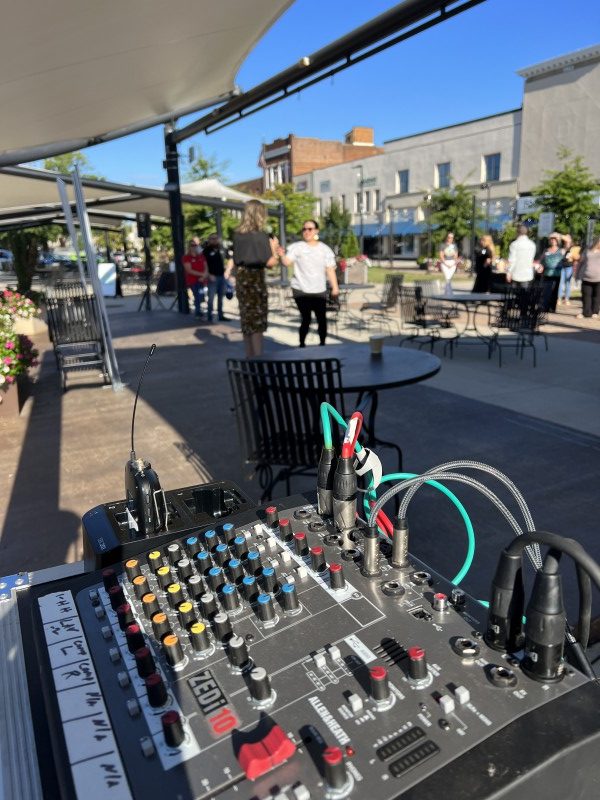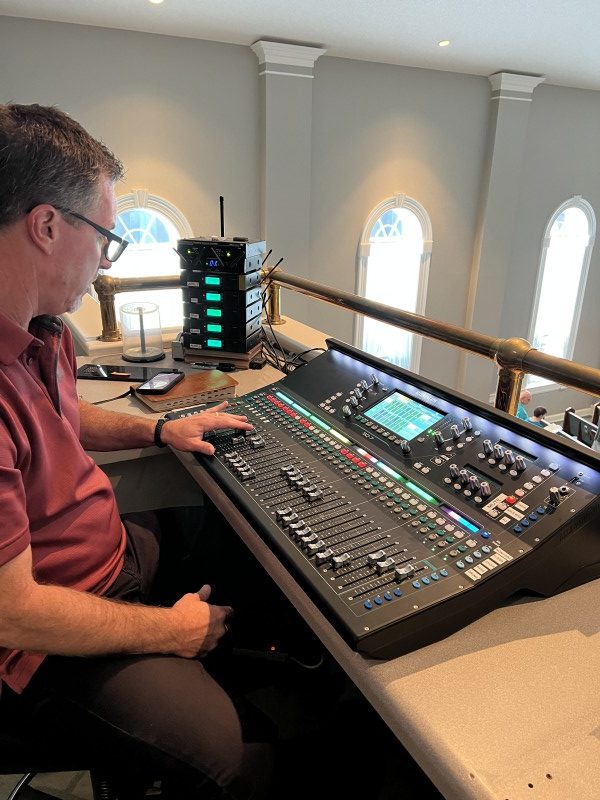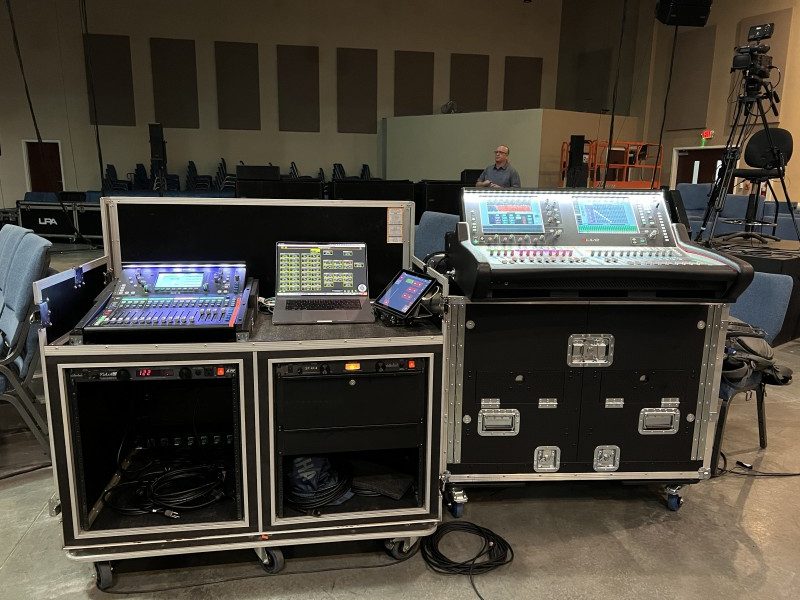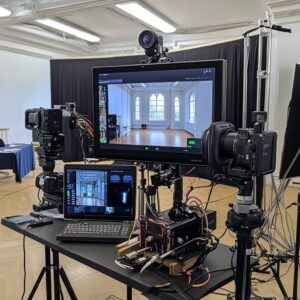How to choose a soundboard for a church
Choosing the right soundboard for worship is a crucial decision that impacts the quality of worship and the overall auditory experience. Soundboards, or mixing consoles, are at the heart of a church’s audio system, blending and refining the sound of voices, instruments, and other audio elements. This guide aims to demystify the process, offering essential insights for churches to make informed choices. Whether you’re a seasoned audio technician or a beginner in church audio solutions, this comprehensive overview will walk you through the key factors, features, and considerations to help you determine how to choose a soundboard for a church.
Introduction to Church Soundboards: A Beginner’s Guide
Soundboards, fundamentally, are the epicenter of managing a church’s audio. They control how sound is mixed, projected, and heard during services and events. For churches, where clarity and sound quality are paramount, selecting the right soundboard is vital. This introductory guide is designed to help you understand the basics of soundboards in a church setting. We’ll explore their role in enhancing worship experiences, ensuring that speeches, music, and singing are delivered with clarity and resonance. Whether your church hosts traditional hymns or contemporary bands, understanding soundboard basics is the first step in creating an immersive and spiritually uplifting auditory experience.
Decoding Soundboard Jargon: Essential Terms Explained
Understanding soundboard terminology is key to making informed choices. Here’s a quick glossary:
- Channels: Individual paths for sound input and output. More channels allow separate control of multiple instruments or voices.
- EQ (Equalization): Adjusts the balance of frequency components in the sound. Crucial for fine-tuning audio quality.
- Faders: Sliders on the soundboard that control the volume of each channel.
- Aux Sends: These enable sound redirection from channels to external processors or monitors, useful for effects or separate speaker setups.
- Gain: Controls the level of signal coming into a channel from an input device. It’s crucial for setting the initial sound level.
- Pan (Panning): Adjusts the sound distribution across the stereo field, allowing audio to be positioned between left and right speakers.
- Monitor Mix: A separate mix of audio, typically used by musicians on stage to hear themselves and others during a performance.
- Effects Loop (Send/Return): Allows external effects processors to be connected, modifying the sound with reverb, delay, etc., before it’s sent to the main mix.
- Bus: A signal pathway that lets you group several channels together, useful for applying the same effects or adjustments to multiple inputs.
- Phantom Power: Supplies power to condenser microphones directly through the microphone cable, eliminating the need for an external power source.
- Mute and Solo Buttons: Mute turns off the sound of a channel, while Solo allows you to listen to one or more selected channels independently of the rest.
- Direct Out: A feature that allows the signal from a specific channel to be sent directly to recording equipment or another destination without affecting the main mix.
Familiarity with these terms is the first step in mastering soundboard functionality for your church’s audio needs.

Exploring Your Options: Understanding Different Types of Soundboards
When choosing a soundboard for your church, understanding the available types is essential. The two primary categories are analog and digital soundboards.
Analog Soundboards are traditional, offering a hands-on approach. They are known for their warm sound quality and physical knobs and faders for adjustments. Ideal for smaller churches or those with simple audio needs, analog boards are typically more budget-friendly and easier for beginners to grasp. However, they lack the advanced features and flexibility of digital boards.
Digital Soundboards, on the other hand, provide greater versatility and control. They come with various built-in effects, programmable settings, and the ability to save and recall scenes or settings instantly. This is particularly useful for churches seeking better control over the sound, providing an enhanced quality through multiple services or event types, allowing quick changes between settings. Digital boards also offer enhanced connectivity options, like USB and WiFi, for recording and remote operation. While they require a steeper learning curve, the investment in training can significantly enhance a church’s audio experience.
Some well-known brands in the soundboard market include Yamaha, Behringer, Allen & Heath, and Soundcraft. Each brand offers a range of models to suit different needs and budgets. When selecting a brand and model, consider factors like the size of your congregation, types of services, and the expertise of the person operating the soundboard.
Understanding the pros and cons of each type of soundboard will help make a decision that aligns with your church’s current needs and future growth.

Key Features to Look For in a Church Soundboard
Tailoring to Your Church: Matching Soundboards with Your Space and Style
The right soundboard for your church is one that harmonizes with both the physical space and the style of your worship services. Room Acoustics play a crucial role; larger spaces with high ceilings may require more processing from it’s soundboards with advanced sound projection and distribution control. Smaller, more intimate settings might benefit from simpler, more straightforward systems.
Worship Style is equally important. A traditional service with a choir and organ demands different audio handling than a contemporary service featuring a band with electric instruments. For dynamic musical arrangements, look for soundboards with more channels, effects, and EQ flexibility to accommodate the range of sounds.
Consider also the Future Needs of your congregation. If growth or changes in worship style are anticipated, choose a soundboard that offers scalability and adaptability. This might mean opting for a digital board with programmable settings and the ability to add more inputs and outputs as needed.
Finally, don’t overlook the Layout and Accessibility of the soundboard. Ensure it’s user-friendly and positioned where operators can have an optimal mix of visibility and auditory control during services. The ideal soundboard should not only meet your current needs but also adapt to future changes, ensuring it remains a valuable asset for years to come.
User-Friendly is Key: Considering Ease of Use and Support
When it comes to church soundboards, user-friendliness is paramount, especially since the operators are often volunteers with varying levels of technical expertise. A User-Intuitive Interface with clearly labeled controls, logical layout, and on-board guidance can significantly reduce the learning curve and minimize errors during services.
Training Resources the manufacturer provides, like online tutorials, user manuals, and customer support, are invaluable for empowering your team. Some soundboard models also offer companion apps or software, providing additional guidance and control options.
Consider the Support and Maintenance services available. Reliable customer service and accessible technical support can be a lifeline for troubleshooting and ensuring the soundboard remains operational. Additionally, check for the availability of local technicians who can provide hands-on assistance or training if needed.
Another aspect is the Flexibility of the System. Soundboards that allow for presets, and scene-saving can be a boon for churches hosting various events. This feature enables quick setup changes between different types of services or events, reducing the volunteer workload.
Selecting a soundboard that prioritizes ease of use and strong support not only streamlines audio management during church services but also fosters a more confident and capable volunteer team.
Balancing the Budget: Navigating Costs and Quality in Soundboards
Budget considerations are pivotal in selecting a church soundboard, requiring a balance between cost and quality. Initially, Assess Your Budget Range: Identify what the church can realistically afford, keeping in mind that the cheapest option isn’t always the most cost-effective in the long run.
Cost vs. Quality is a critical evaluation. Higher-priced soundboards often have advanced features, better sound quality, and longer lifespans. However, mid-range models can offer a good balance, providing necessary features without overstretching the budget.
Long-Term Value should be considered. Investing in a slightly more expensive soundboard might mean fewer replacements or upgrades down the line. Evaluate warranty options and the potential costs of maintenance and repairs.
Don’t forget to factor in Ancillary Costs: cables, microphones, speakers, and potential installation fees. These can add up and should be included in the overall budget.
Consider the option of Phased Upgrades. If budget constraints are tight, start with a basic but reliable soundboard, ensuring it’s scalable to accept future upgrades as more funds become available.
Balancing the budget means making informed decisions that align financial constraints with the church’s audio needs, ensuring a sound investment in your congregation’s worship experience.
Built to Last: Focusing on Soundboard Quality and Lifespan
Investing in a soundboard that stands the test of time is essential for churches, as it impacts long-term usability and cost-effectiveness. Build Quality is a primary indicator of a soundboard’s durability. Look for robust construction, quality materials, and positive reviews from long-term users. A soundboard that can withstand regular use and the occasional mishap is a wise choice.
Technical Specifications also play a crucial role in longevity. Higher-quality components like superior preamps, durable faders, and reliable power supplies ensure consistent performance and reduce the likelihood of frequent repairs.
Brand Reputation can be a helpful guide. Established brands often have a track record of reliability and customer satisfaction. Researching and seeking recommendations from other churches or audio professionals can provide valuable insights into which brands and models have proven dependable over time.
Future-Proofing your investment is another consideration. Opt for a soundboard with the flexibility to adapt to technological advancements and the changing needs of your church. This includes considering software updates, expandability options, and compatibility with new devices and technologies.
Lastly, Warranty and Support are critical. A comprehensive warranty can safeguard your investment, while strong customer support ensures you get help when needed, prolonging the life of your soundboard.
Focusing on quality and lifespan ensures your soundboard will be a valuable asset to your church’s audio system for years to come.

Making the Right Choice: Selecting the Perfect Soundboard for Your Church
Selecting the perfect soundboard for your church culminates in balancing various factors to meet your unique needs. Start by Reviewing Your Church’s Specific Requirements: size, worship style, existing church sound system, and types of events. Match these with a soundboard’s features, ensuring it can handle the complexity and diversity of your services.
Involve Your Audio Team: Engage those who will operate the soundboard in the decision-making process. Their insights on usability and functionality can be invaluable. If your team is primarily volunteers, prioritize ease of use and training availability.
Don’t Rush the Decision: Take the time to research, compare models, and even test different soundboards if possible. Reach out to other churches or audio professionals for first-hand experiences and recommendations.
Consider Long-Term Implications: Think beyond immediate needs. A soundboard that offers expandability, up-to-date technology, and reliable customer support is a sound investment for the future.
Ultimately, the right audio mixer aligns with your church’s current needs, anticipates future developments, and fits within your budget. It should enhance the worship experience and be a tool that your audio team feels confident and comfortable using. This thoughtful approach ensures that your choice will enrich your church’s services for years to come.
As you embark on the journey of enhancing your church’s audio experience, remember that expert guidance can make all the difference. At RYGID AV, we specialize in providing tailored audio-visual solutions to meet the unique needs of your worship space. Our team of experienced professionals is here to assist you with complete sound system setup and installation – selecting the perfect soundboard, integrating it with your existing setup, and providing ongoing support and training. Let us help you transform your audio capabilities and enrich your congregation’s worship experience. Contact RYGID AV today to explore our services and take the first step towards exceptional audio quality in your church.



